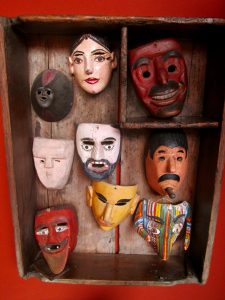
Ever since last month’s presidential election, lines from T. S. Eliot’s long and dreamlike poem, “The Love Song of J. Alfred Prufrock,” recalled from high school, have been resurfacing in my brain like so much flotsam.
Lines like: “There will be time to prepare a face to meet the faces that you meet…” and “I should have been a pair of ragged claws scuttling across the floors of silent seas…” and “I grow old… I shall I wear the bottoms of my trousers rolled….”
To me, it’s a gloomy poem, fitting for the gloomy news of Donald Trump’s questionable “win.” But these fragments from “Prufrock” are coming to me like messages in corked bottles, so I’m trying to learn what I can from them.
Especially the message about the face. Since Wednesday, November 9, my face seems to have sunken, shrunken, lost air, lost any spark of hope: Eyes darker and more deeply set, cheeks colorless and flaccid, mouth pale and fallen at the corners. Is it just the inevitability of age, I wonder as I look too closely into the bathroom mirror every morning now, or is it the result of shock and incalculable concern over these recent events that I’m seeing in my reflection?
Whichever, I know I mustn’t inflict my sad face on others, particularly here in sunny San Miguel de Allende, where I find the good-natured and seemingly always upbeat Mexican people are so quick to smile and show a brave face to the world. So I’ve resurrected my long unused makeup bag “to prepare a face to meet the faces that I meet” before leaving mi apartamento every day.
It’s a mask made with golden-hued foundation creams, rosy blush-on powders, subtle eye shadow, glossy lipstick, and lash-lengthening mascara — along the lines of the masks I used to apply decades ago, when I was young and attempting to be attractive for men or modelling shoots. The real me was then, and still is now, behind this painted-on mask. But I’ve always felt it to be a benign disguise.
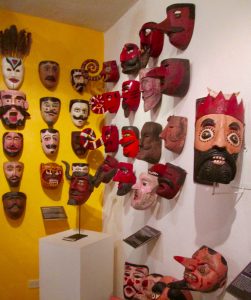
My renewed need to hide what my naked face can’t help but express has motivated me to begin to explore the deeper, wider meanings of masks in general — a pleasant intellectual pursuit that’s (thankfully) taken my mind off of the worrisome news. On this new quest I visited the renown mask museum, Otra Cara de Mexico, here in San Miguel and spoke with its owner and curator Bill LeVasseur the other day.
Bill, an American who’s been collecting Mexican masks for twenty-six years and has authored an exquisite book on the subject, explained to me that “masking” is a universal human behavior. “There is a broad range in the realm of masking – from masks for special occasions, such as Halloween or Carnival, to the clothing, sunglasses, and makeup we as individuals deliberately choose to wear every day when we present ourselves to others,” he said.
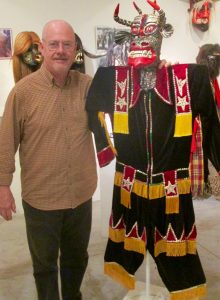
Mexican dance masks – Bill’s specialty and passion (which his wife Heidi refers to as his “addiction”) – fall into five broad categories: historical, Christian, occupational, agricultural, and entertainment-oriented. Most of the more than 500 masks artfully displayed in Bill’s collection have been gathered during his personal visits to villages and ceremonies over the years; all of the masks are authentic in that they’ve actually been used in village performances.
“Perhaps no other single object reflects the true nature of Mexico’s indigenous culture, ceremony and spiritual complexity like the dance mask,” the Welcome sign in Bill’s museum reads. “Masked festivals, some dating back to pre-Hispanic times, still play an important role in the religious and community life of Mexico to this day.”
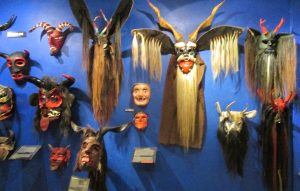
The frustrated anthropologist in me wants to pursue this rich subject further – read, think, explore, and write more about masks. But for now I’ll have to content myself with this: For many thousands of years human beings throughout the world have used masks for countless valid reasons – for decoy and deception, for protection, for inspiration, for celebration; to hide behind, to mock oppressors, to achieve cultural cohesion, to chase evil spirits – to effect a transformation through art.
My need to create a makeup mask now makes sense to me in this broad, universal context. The word for “mask” in Spanish, after all, is máscara.
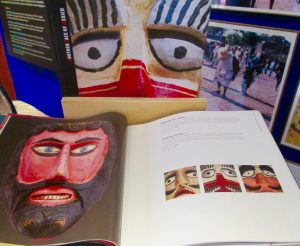
[For more information about the Mask Museum in San Miguel, go to: www.maskmuseumsma.com. Visits are by appointment only: Call 415-154-4324. All museum proceeds are donated to the Casa de los Angeles Day Care Center in San Miguel.]
